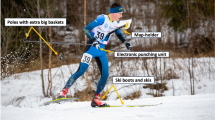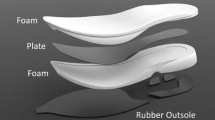Abstract.
An advantage of legged locomotion is the ability to climb over obstacles. We studied deathhead cockroaches as they climbed over plastic blocks in order to characterize the leg movements associated with climbing. Movements were recorded as animals surmounted 5.5-mm or 11-mm obstacles. The smaller obstacles were scaled with little change in running movements. The higher obstacles required altered gaits, leg positions and body posture. The most frequent sequence used was to first tilt the front of the body upward in a rearing stage, and then elevate the center of mass to the level of the top of the block. A horizontal running posture was re-assumed in a leveling-off stage. The action of the middle legs was redirected by rotations of the leg at the thoracal-coxal and the trochanteral-femoral joints. The subsequent extension movements of the coxal-trochanteral and femoral-tibial joints were within the range seen during horizontal running. The structure of proximal leg joints allows for flexibility in leg use by generating subtle, but effective changes in the direction of leg movement. This architecture, along with the resulting re-direction of movements, provides a range of strategies for both animals and walking machines.
Similar content being viewed by others
Author information
Authors and Affiliations
Additional information
Electronic Publication
Rights and permissions
About this article
Cite this article
Watson, J.T., Ritzmann, R.E., Zill, S.N. et al. Control of obstacle climbing in the cockroach, Blaberus discoidalis. I. Kinematics. J Comp Physiol A 188, 39–53 (2002). https://doi.org/10.1007/s00359-002-0277-y
Accepted:
Issue Date:
DOI: https://doi.org/10.1007/s00359-002-0277-y




